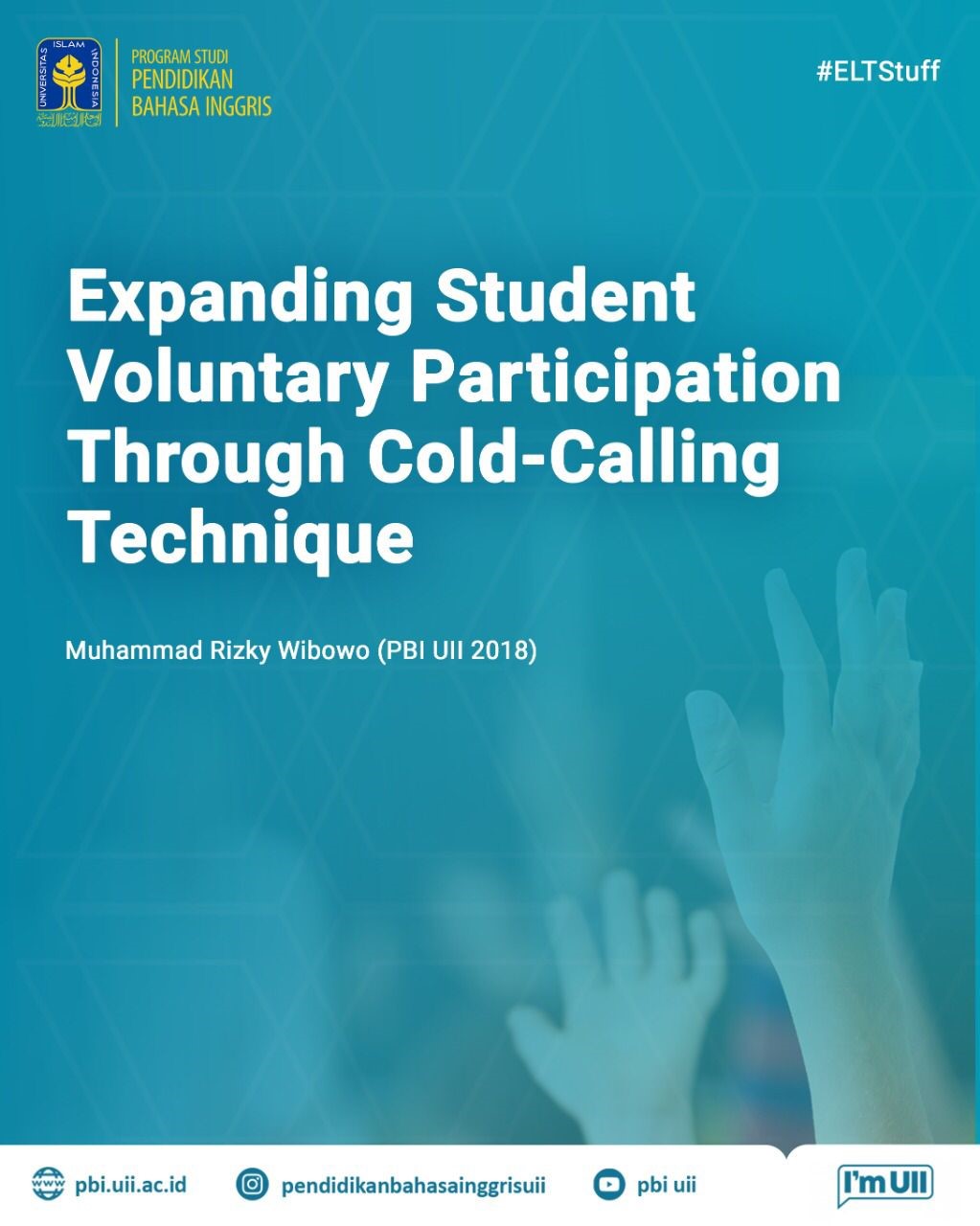EXPANDING STUDENT VOLUNTARY PARTICIPATION THROUGH COLD-CALLING TECHNIQUE

Increasing engagement during class discussion is a challenge faced by education today, especially during the pandemic which requires students to study from home and reduce socialization with others. This can indirectly reduce the students’ enthusiasm to engage in-class learning actively. Although engagement can be measured in a variety of ways, participation in class discussions is the easiest response to quantify.
Voluntary participation, as simple as raising a hand to answer a question, can be an invaluable tool for teachers to measure the content understanding level of the students and make instructional decisions based on that data. Nevertheless, the problem with large group class discussions is often dominated by the voices of a few. Even in online learning settings, we will find many students with low voluntary participation in class. Whereas, by increasing the number of students sharing answers during class discussions, teachers will better understand how well most students understand the content.
One approach to increasing the number of student volunteers involved in class discussions is cold-calling the students. The term cold-call refers to any instance in which a teacher calls a student whose hand is not raised. Cold Call is intended to be an inclusive technique that has the potential to get more students doing more of the cognitive work. As a simple question method, teachers can use this technique to increase attention, boost energy, and better understand their students by calling on students to answer the oral question at random and not based on who volunteers to participate. This technique was used by Muhammad Rizky Wibowo (an English Language Education student batch 2018) in his School-Based Teaching Practicum and succeeded in making the class more interactive.
Some of the procedures that Rizky did to use the cold-calling technique in his class were; first, he framed the class session. After framing the class session, he names the question before identifying students to answer it. After that, make calls to students regardless of whether they have hands raised. Use simple questions to get students on board. Once they are prepared, the level can rise in a more advanced form. Finally, connect the thinking thread. If one student gets the answers only half right, the teacher can call other students to give it a hint and return to the first students another shot to get it entirely right.
It is in line with a study that found cold-calling effectively increased the number of students who answered questions voluntarily. Furthermore, in a class with high cold-calling, voluntary participation increased over time, and students became more comfortable participating in discussions. Other research has also confirmed that the more students practice participating in class discussions (even if via cold-calling), the more skilled the student becomes and the more comfortable he or she will be when using this skill.






Leave a Reply
Want to join the discussion?Feel free to contribute!